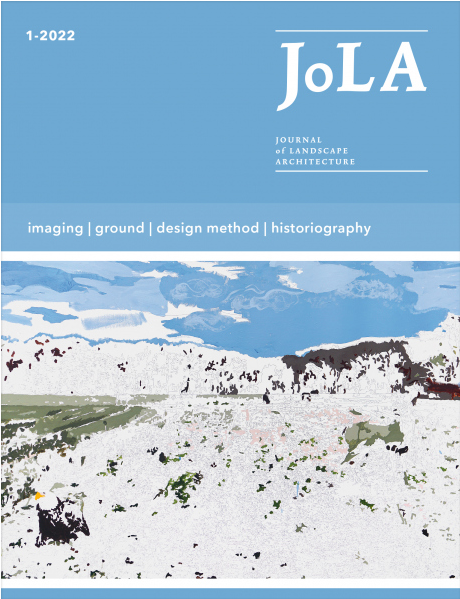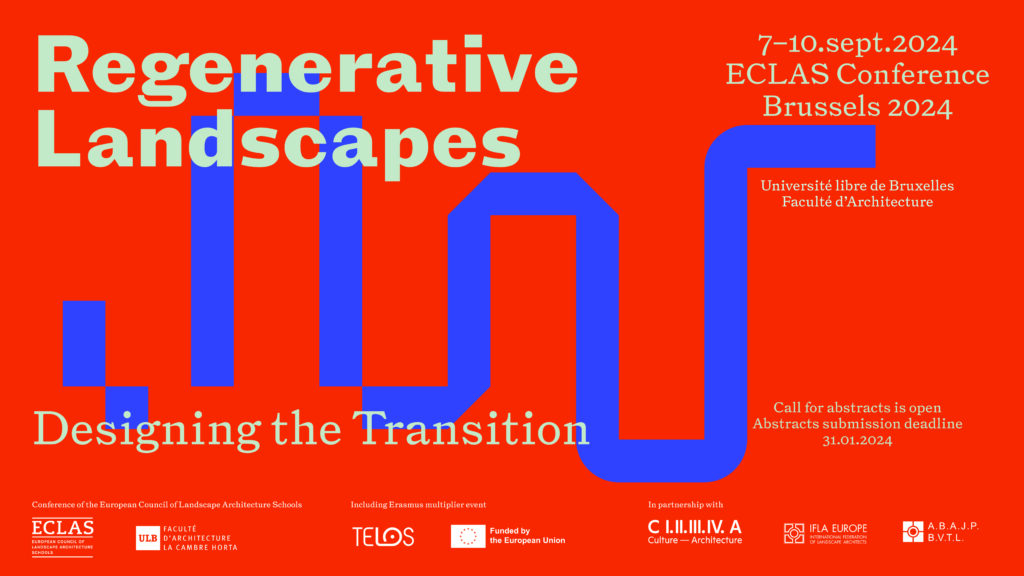Issue 1_2022 has just been released focusing on
imaging
ground
design method
historiography

Editorial
Copy and paste landscapes
Imke van Hellemondt, Janike Kampevold Larsen, Sonia Keravel, Anais Leger-Smith, Usue Ruiz Arana, Burcu Yiğit-Turan & Ursula Wieser Benedetti
‘Copy and paste’, or copy-paste, is a term that’s so familiar these days that we tend to hardly think about it. The action of copy-paste may be judged sarcastically or derogatorily, but it is seldom critically questioned, whether it is employed in designs themselves or in the texts and images that are used for representation.
What do we find if we scrutinize our own profession through the prism of copy-paste, in particular in imaging/visualizations? In an era in which images and ideas are reproduced at great speed and circulate endlessly, what are the effects of visual hyper-circulation? Does it broaden the profession’s spectrum by making available an immense wealth of inspiration sources, or does it induce approaches disconnected from site thinking? To take an iconic example, imitations of New York’s High Line seems to have sprung up all over the world, in copies that are sometimes hard to differentiate from their famous model. This copy-paste mentality is strengthened by the amnesia that reigns among the design ranks. Projects and designs are pre-dominantly presented in historical isolation, in particular when they are popular.
That the concept of transforming an urban railroad into a rec-reational area or route is not new in itself is often overlooked.1 Besides the qualities of the design of the New York project, the fact that it is regarded as ‘original’ may have contributed to its star status. Rather than its concept, its structures, shapes, objects and materials are copied from images, and in doing so, its reputation. With each copy, a little bit of ‘High Line character’ is reflected in other designs.
Are these designs still meaningful within their concrete, immediate surroundings, the substrate of the place, or do they tend to become shapes devoid of meaning? What kind of effects do the created meanings conceive?
These questions are not new. Models have circulated over the centuries, crossing borders and cultures, being absorbed, transported by travellers and books, transformed and constantly reinterpreted. How does a project become a model? How does systematization in planning work? How do systems and models influence the way we view and envision our projects? The historian Françoise Choay has already studied these questions in relation to urbanism and architecture.2 Phenomena such as absorption, reinvention, and transculturation have influenced garden art and landscape architecture for centuries. Taking a look at nineteenth-century pattern books is particularly enlight-ening—one can trace genealogies of forms circulating throughout Europe and beyond. Famous British books like the ones by William Chambers were—at least partly—published in French and later disseminated in many countries; the French treatise of Édouard André travelled as far as Japan. The diffusion of shapes and ideas is thus clearly nothing new.
Speed
What is new, in reality, is the ease, speed and scale of dissemination, the immediateness of instant, effortless availability.
A click of a button will do to multiply. Times and techniques do not favour critical reflection. What we lose, then, is one of the central segments in the absorption process: a decelerated movement, a sort of delay in transmission that makes contents not only rarer, but also more desirable, probably because of the difficulty of obtaining them. The ensuing absorption phase is a process that deeply engages the designer: analysis, interpretation, decision making . . . all these phases are inscribed in the dimension of time. A dimension that has become a scarce commodity in our bustling working environments.
Selfie landscapes?
What is also new is the perpetual necessity to produce images: social media like Instagram literally enjoin creators in the visual professions to produce images, images that should be appealing in a perfectly square format. The pressure to produce images—akin to publish or perish—is pervading the design professions. Social media have become the main showcase for presenting one’s work.
Are we then lured into this inversed mirror to produce designs that are ‘instagrammable’? Is visual culture over-conditioning the way we design? What is the weight of the attraction of the ‘finished product’ in design decisions? Landscape cannot—and probably should not—always be shown in a manner that is attractive in visual media. An instagrammable landscape responds to the most obvious and commercial trends in our culture. The many qualities of landscapes that are less suitable for visual reproduction—their voids, fuzziness, openness and uncompletedness—often escape the frame of the image, and even our imagination. This means they are lost, first from the representations and then, as a long-term consequence, from the landscape practice itself. Jonny Aspen, professor at the Oslo School of Architecture and Design, coined the term ‘zombie urbanism’ about ten years ago, a ‘staged urbanism in which there is no room for irregularity and the unexpected; a well-designed, neat, and tedious urbanism based on a simplified understanding of the urban combined with more ideal aspirations about creating “living”, and “people friendly” cities’.3 He associated it with the neoliberal tendency to ‘shamelessly’ exploit urban features to brand, market, and sell city space.
Landscape images and reality
Last, but not least important, landscapes are sensually more than visual images. Should landscape design not regard as its most important mandate to tend to our other faculties—to hear, to feel the breeze or wind, to be exposed to the rhythms of the more-than-looking and to get our feet a little wet?
Contrary to what digital images may suggest, landscapes are always changing and unfinished, and a fixed image cannot fully capture this ongoing process.4 To learn not to read images as reality, but to deconstruct them and to understand the models that are at work behind the representations, is a challenge for landscape architects, researchers, and educators.5 In our disciplinary culture, the role of landscape images, of both existing and projected landscapes, is certainly worth a critical gaze. Such a gaze could contribute to clarifying certain lines: lines of thinking, lines of conduct, lines of action. And it could divert attention from easily reproduced and self-glorifying designs and images to more modest examples, such as Martí Franch Batllori’s project Girona’s Shore.6 Landscape architecture, as a discipline anchored in space and time, is more than ever challenged to exert self-critique, one that should envisage the complex phenomena of hyper-mediatization, homogeneity, absorption, reproduction, site thinking . . . and one that might offer some clues concerning the dynamics of the design process and the production of space.
Notes
1 The coulée verte in Paris, for instance, was opened in 1993.
2 Françoise Choay, La règle et le modèle: sur la théorie de l’architecture et de l’urbanisme (Paris: Seuil, 1996).
3 Jonny Aspen, ‘Oslo: The Triumph of Zombie Urbanism’, in: Rodolphe el-Khoury and Edward Robbins (eds.), Shaping the City: Studies in History, Theory and Urban Design (London: Routledge, 2013).
4 See: Ed Wall, ‘Incompleteness: Landscapes, Cartographies, Citizenships’, Landscape Research 47/2 (2022), 179–194.
5 See : Karl Kullmann, ‘Hyper-Realism and Loose-Reality: The Limitations of Digital Realism and Alternative Principles in Landscape Design Visualization, Journal of Landscape Architecture 9/3 (2014), 20–31.
6 See: emf.cat/en/projects/l/416-gironas-shore-the-frame-work-project.html.
